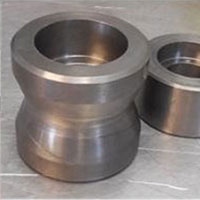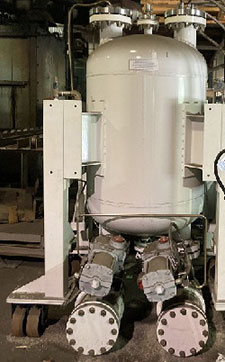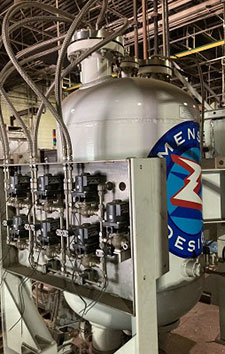
Most heat treaters and metallurgists believe that to reduce part distortion, the quenching rate must be slowed. However, a faster quench rate DOES NOT increase the probability of cracking or distorting the part. An Intensive or Instant Impact Quench is both “uniform and intensive” applied after Austenitize heating. Very high intensity quenchant flow, that uniformly applied to the hot part surface are to eliminate non-uniform film boiling in the case of a water quench, and to prevent stagnation in a gas quench.
DANTE Solutions FEA models predict and actual part testing demonstrates that the Probability of Part Distortion or Cracking and the Quench Cooling Rate is a Bell-Shaped Curve. As long as the cooling rate is applied UNIFORMLY at the part shell, the speed of the quench can be slow, as in a gas quench or molten salt quench, or very intensive, as in a plain water quench, and the probability of part cracking or distorting in the quench will be very low.
Through many years of continuous development, IHTS has developed patent pending High Pressure Instant-Impact Quenching technologies and the equipment to apply the quenchant so it has an instant-impact at the hot part shell followed immediately by a Uniform Quenchant Renewal Rate (UQRR®).
The combination of DAT Heating and HPIQ can actually result in twice the level of beneficial residual compressive surface stresses in a ductile iron part –our IQDI® Products, compared to a traditional case carburized and oil quenched 8620 steel part.
After DAT Heating, the HPIQ instantly freezes the part’s shell to avoid part cracking, set the part geometry and yield a predictable size change that can be factored into the part dimensions before heat treatment for the desired Quench2FIT™ part after heat treating – virtually eliminating post-heat treatment distortion correction costs.
So, in many cases, using IHTS’s patented DAT heating and HPIQ intensive quenching techniques in combination can enable part designers to use a less expensive, lower alloy, through-hardening steel, or even a low cost, continuously cast ductile iron billet or tube, and achieve a “case hardened and core toughened” part with predictable size changes and the consistently uniform mechanical properties required by the part end user.

